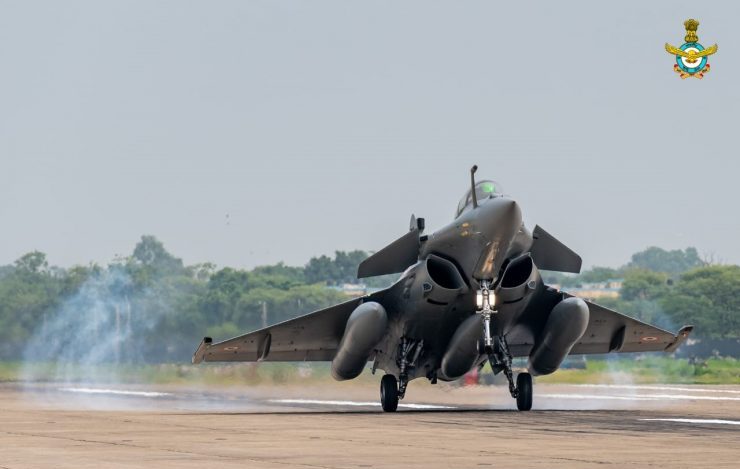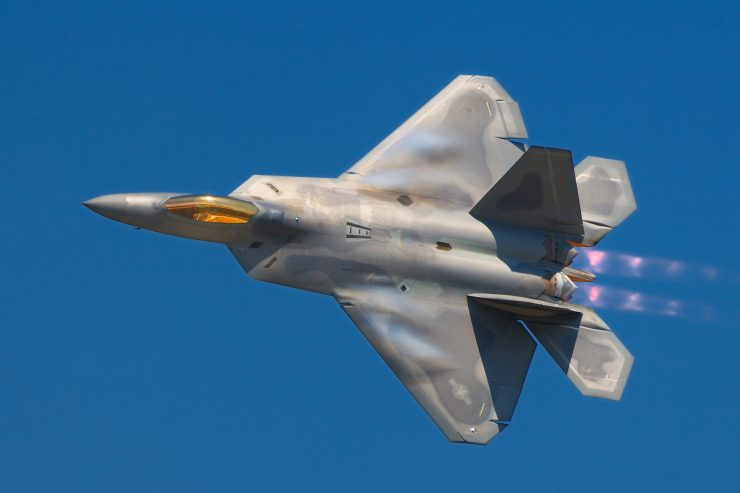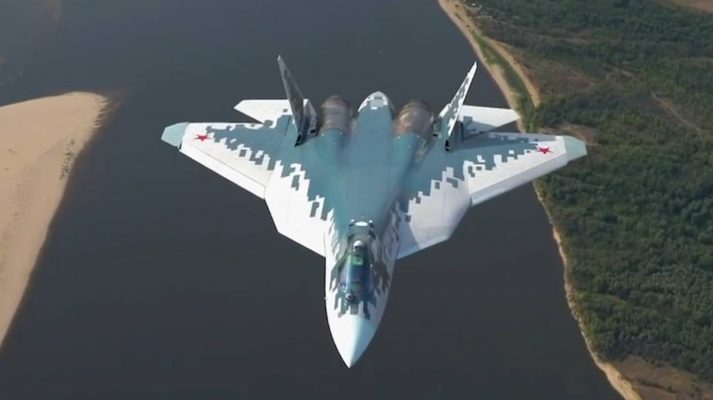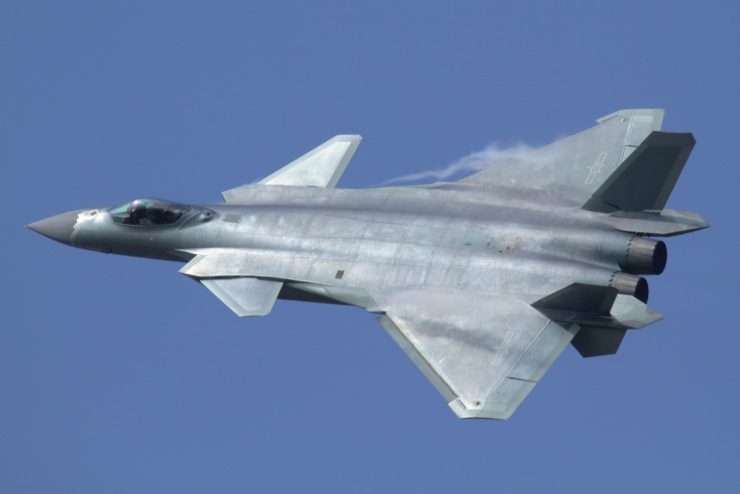
Abstract
In a recent article published by Global Times, the mouthpiece of Chinese Communist Party run Government on July 30, titled “India’s Rafale fighter jets have no chance against China’s J-20’ Chinese commentators posing as domain experts tried to downplay the fear generated by the commissioning of Rafale into the Indian Air force as ‘no match’ to its so called fifth generation fighter aircraft (FGFA) capabilities. This article seeks to unravel the mysteries behind the comparative fifth gen fighter aircraft technologies and ensuing comparison with existing fourth and fifth generation aircraft while providing a technical analysis of the capabilities of J-20 and its competitors. It shall also provide a pointed analysis of the Chinese fighter capabilities in the true sense. The article is important as in the event of a war between India and its allies with China and its allies, air power will hold centre-stage. A critical analysis of the strategic platforms possessed by both the nations would be required in order to understand the challenges before the Indian Air Force and take adequate steps to fill the gap.
What is a fifth generation fighter aircraft
A fifth-generation fighter consists of stealth characteristics with high manoeuvrability, multirole capabilities, low RCS, thrust vectoring enabled super-cruising ability etc. An ideal fifth generation aircraft will have internal weapons bay in order to avoid high RCS, full composite material body to reduce weigh and RCS, and increase stealth with external hard points on their wings for use on non-stealthy missions. Fifth generation aircraft are all digital, situationally aware fly by wire enabled aircraft jam packed with advanced avionics, networked data fusion from sensors with open design architecture for continuous upgrade. This reduces the decision time of the fighter pilot and enabling him with fingertip capabilities as the fighter based onboard computing systems do the decision making on his/her behalf. Fifth generation fighter aircraft have sophisticated advanced electronically scanned array (AESA) radars installed instead of the manual passive electronically scanned array (PESA) radars generally found in fourth generation fighters. Fifth generation fighters do not have Canards as it is a source of higher RCS and come with radar absorbing material (RAM) coatings.
All comparative fifth generation fighter aircraft in service have taken years of research and development to attain the serial production stage. American aerospace and defence industry had years of experience dating back to the World War times when fighter planes were developed in large numbers for war consumption and assistance of allies. Aircraft carrier based design was utilised and perfected after years of toil and shedding of blood of hundreds of fighter pilots. The experience helped US Air Force to not just build in a formidable air power but helped design the nuclear carrier based fleet which would project the might of the US as a superpower. For the US, the cold war against USSR helped cement the defence and strategic research to the next level with the intent to overpower it across all departments and maintain superiority. The development of the B2 stratofortress bombers, Lockheed Martin SR71 Blackbird, F-117 Nighthawk, Lockheed Martin U2 high altitude surveillance planes etc. helped US gain a technological superiority based on the merits of a superior defence research and maturity attained due to its research, development and testing during critical conflict scenario. This helped the US to refine its strategic game-plans regarding development, maintenance, positioning, usage and feedback for optimisation and effectiveness to its varied stakeholders paving the way for quicker development of critical strategic equipment at a lower cost.
Lockheed Martin F-22 Raptor –
The single seater fifth generation fighter aircraft was designed by Lockheed Martin as an air superiority fighter replete with ground attack, electronic warfare, and signal intelligence capabilities. Some 187 F-22s are currently in service of the US Air force. The F-22 Raptor is the first operational aircraft to combine super cruise, super manoeuvrability, stealth, and sensor fusion in a single weapon platform. The aircraft’s dual Pratt & Whitney F119-PW-100 augmented turbofan provide a maximum thrust in the 35,000 lbf (156 kN) class. The F-22’s high cruise speed and operating altitude helps improve the effectiveness of its sensors and weapon systems, and increase survivability against ground defences such as surface-to-air missiles. The airplane’s structure contains a significant amount of high-strength materials to withstand stress and heat of sustained supersonic flight. Respectively, titanium alloys and composites comprise 39 per cent and 24 per cent of the structural weight. The radar absorbent material (RAM), a special coating over the aircraft along with active cooling in heat buildup edges, special ergonomic design helps it to dramatically reduce RCS, radio emissions, infrared signature, acoustic signature and naked eye visibility. Internal weapons bay helps provide additional stealth capability to the fighter. There were nagging issues which affected the F-22 specially the issues plaguing the helmet mounted display (HMD) as well as the ejection seats. In several cases fatalities were reported and Lockheed Martin did try solving the issue but with partial success leading to the US Air force to scout for a newer and advanced generation of a fifth generation fighter.

F-35 (A, B, C) Lightening
The F-35 designed in three versions to perform conventional takeoff and landings (CTOL), catapult assisted take-off but arrested recovery (CATOBAR) and short take off and vertical landing (STOVL) roles is a family of single-engine, supersonic, stealth multirole fighters which was designed to be distinctly different and more advanced compared to the F-22 in terms of stealth capabilities, performance and avionics. The second fifth generation fighter to enter US service and the first operational supersonic stealth fighter, the F-35 emphasises very low observables (VLOs), advanced avionics and sensor fusion that enable a high level of situational awareness and long range lethality, the USAF considers the aircraft its primary strike fighter for conducting suppression of enemy air defence (SEAD) missions, owing to the advanced sensors and mission systems. Some 550 of them are already in service and another 2,000 fighters are planned to be delivered in due course. They are considered as a cheaper and half a generation ahead of its predecessors and existing fifth generation fighter projects. Teething problems with respect to the fighter plane and the escalating cost per unit of the aircraft adds to the challenges of the fighter place which is required.

SU 57
SU 57 has been designed by its Russian manufacturer Komsomolsk-on-Amur aircraft plant. Single-seat, twin-engine multirole fifth-generation jet fighter is being developed since 2002 for air superiority and attack operations. It is the first stealth fighter of the Russian air force designed with composite materials to have super-cruise, super-manoeuvrability, and advanced radio electronics and avionics to overcome the earlier generation fighter aircraft and destroy air, ground and naval defences. It has got powerful onboard computers replete with enemy radar electronic jamming ability, AESA radar, Al 41 engine and innovative technologies to give it a strategic edge over the enemy fighters.
Till now 11 of the Su 57 have been produced, which were dedicated for testing and trials with few in the Serial production stage. India had initially partnered with Russia to build an India specific design for fifth generation fighter aircraft (PAKFA) with options for bulk purchase orders. But the partnership did not materialise as Russia was not willing to transfer of technology (TOT) for the same. IAF also found issues with regards to stability of the aircraft along with super-cruise ability claims connected with its lower thrust output of the Al 31 and its senior Al 41 engines. IAF did provide its inputs to Russia and wanted it to ensure that the gaps were rectified before India could place orders. India was worried that the first SU-57 aircraft would not come to India before 2025 at the current rate of testing and trial even after it contributed US$5 billion requested by Russia as share of joint design costs. More so, Russia was not willing to share the technical learnings emerging from the design of the aircraft with its Indian counterparts even if it contributes to the design and development cost, something which was opposed by IAF leading it to exit the partnership. India has though reiterated to placing orders for SU-57 at a later date once the testing and trail phase is completed. Latest information emerging from Russia hints at Russian designers testing a remote controlled version of the Su 57 being tested by United Aircraft Corporation (UAC) as per its CEO Yuri Slyusar in an interview with Zvezda TV on August 24.

Now we look at the Chinese J20 fifth generation fighter aircraft of the PLAAF and compare it to the fifth generation fighter planes available with US and Russia.
J20 Chengdu and comparison with the existing fifth gen fighter aircraft
J20 Chengdu- Primarily designed as a single seater, twin engine multirole aircraft manufactured by Chengdu aircraft industry group, it is referred as a stealth fifth generation fighter by the PLAAF to execute ground attack missions even in hostile environments due to its delta wing design. Though, lack of verifiable data emerging from China is a major hindrance to the research on J20, yet studies based on simulations made on the lab test prototypes yield substantial information. Compared to the stealth RCS of F-22 Raptor of .0001, the J20 has a higher stealth RCS putting it on the losing side. The J20 makers claim that the aircraft has a high total thrust with after-burners compared to other aircraft is a positive feature but needs to be verified. It is interesting to note that the so called Chinese fifth generation fighters are powered by Russian Salyut Al-31 M engines which do not provide the thrust required for super-cruise, till a local engine under development is integrated. A monograph published by Dr Michael Pelosi and Dr Carlo Kopp back in 2011 for Air Power Australia titled “A preliminary assessment of special radar cross-section performance in the Chengdu J20 prototype” had earlier concluded that the RAM developed for J20 were unfit for utilisation as a specular radar absorbers. The study additionally concluded that the aircraft uses an axisymmetric nozzles to attain VLO (Very low observable) characteristics which is a poor design practice by the designers but may still assist in providing very low observable performance in the nose angular sector. Though, the tail part of the J20 showcased poor VLO.

The aircraft is proclaimed by its designer as a fifth generation fighter plane despite of it having a set of canards (fuselage-mounted small, forward wings located forward of the main wing to improve aircraft control and contribute to lift, they are considered to present large angular surfaces that tend to reflect radar signals). This is unlike F35, F22 or the Russian Su 57 fifth gen fighter planes where it in not available. The choice of all moving slab stabilators will also greatly impact the RCS at deflection angles away from the neutral position as per Pelosi and Kopp (2011). The presence of the canards in the J20 was a focal point of discussion that took place with the IAF chief candidly mentioning the presence of the canards to question the so called fifth generation capability of the fighter plane (https://www.hindustantimes.com/india-news/rafale-vs-j-20-ex-iaf-chief-dhanoa-calls-china-s-bluff-with-two-simple-questions/story-Al6kSI8wjj0SvypDHeIrXI.html). Earlier, Sputnik news (2018, https://sputniknews.com/asia/201803231062835269-chinese-j20-not-undetectable-iaf/) highlighted a statement made by then IAF Chief Air Chief Marshal B S Dhanoa wherein he mentioned that IAF Su-30MKIs could track the J20 signals from long distance which nullified that gains claimed by J20 designers on the stealth capability.
The J20s after burner, fuselage, tail-booms, are not considered compatible for high stealth performance with poor H polarisation recorded. Also to be noted is the larger size of the aircraft (20.36 m in length) compared to the existing fifth generation fighter. Chinese experts in the above mentioned news article themselves referred to the J20 as a ‘fourth generation fighter’ while comparing it with India’s Rafales. The question is; what was the need for the Chinese commentators to compare a so called high profile ‘tantalising’ fourth generation fighter aircraft, the J20 Chengdu with an ordinary Rafale? Or are they suddenly threatened by its presence so as to be forced to put a statement in their official mouth piece, the Global Times. For now, only time, place, position and possibly a conflict will be the last judge to the strengths and weaknesses of the capabilities of the war machines. Meanwhile, Chinese aviation experts may spend some time learning to differentiate between a third, fourth and a fifth generation fighter aircraft before contributing a column to Global Times.
-The writer is an Assistant Professor, Institute of Management, Nirma University, Ahmedabad. The views expressed are personal and do not necessarily reflect the views of Raksha Anirveda








